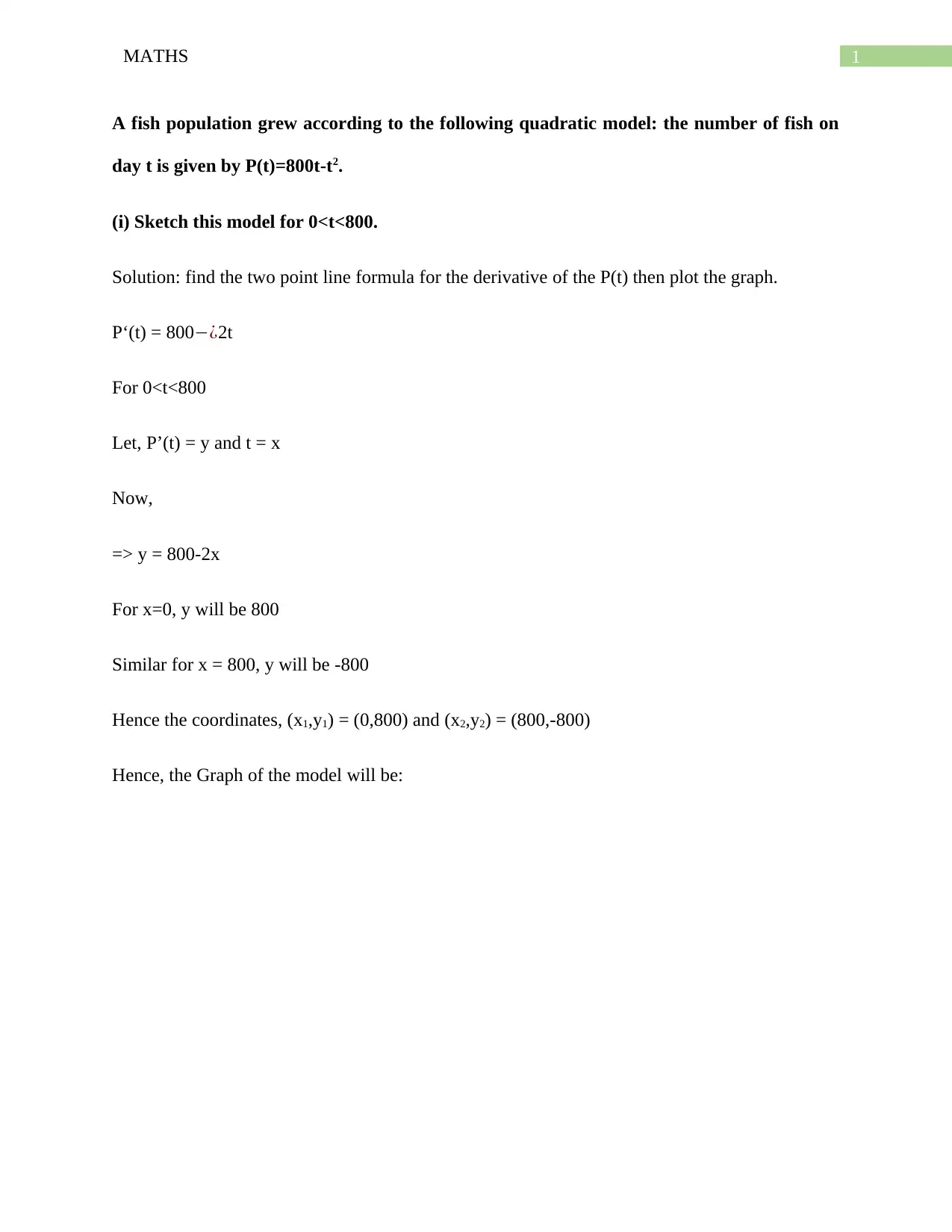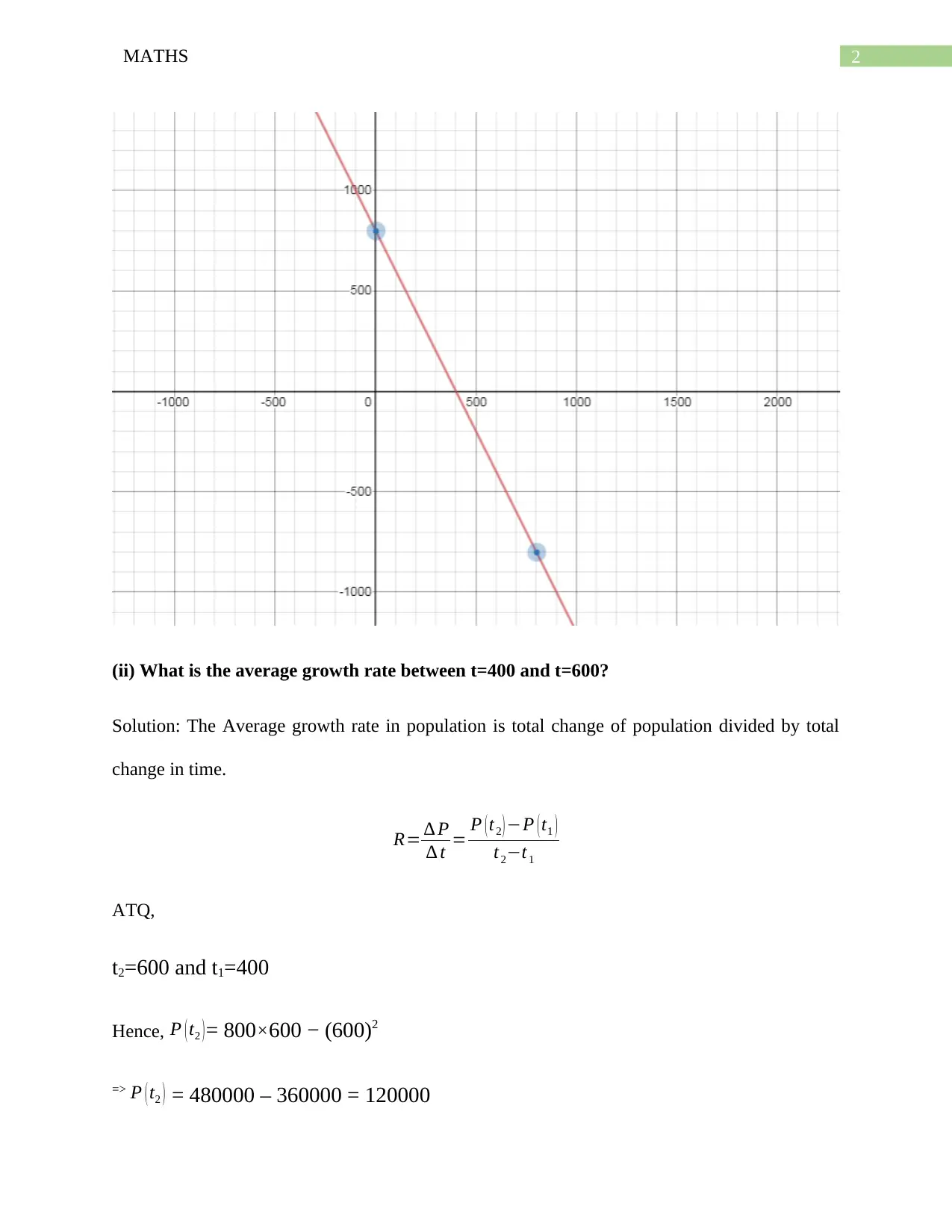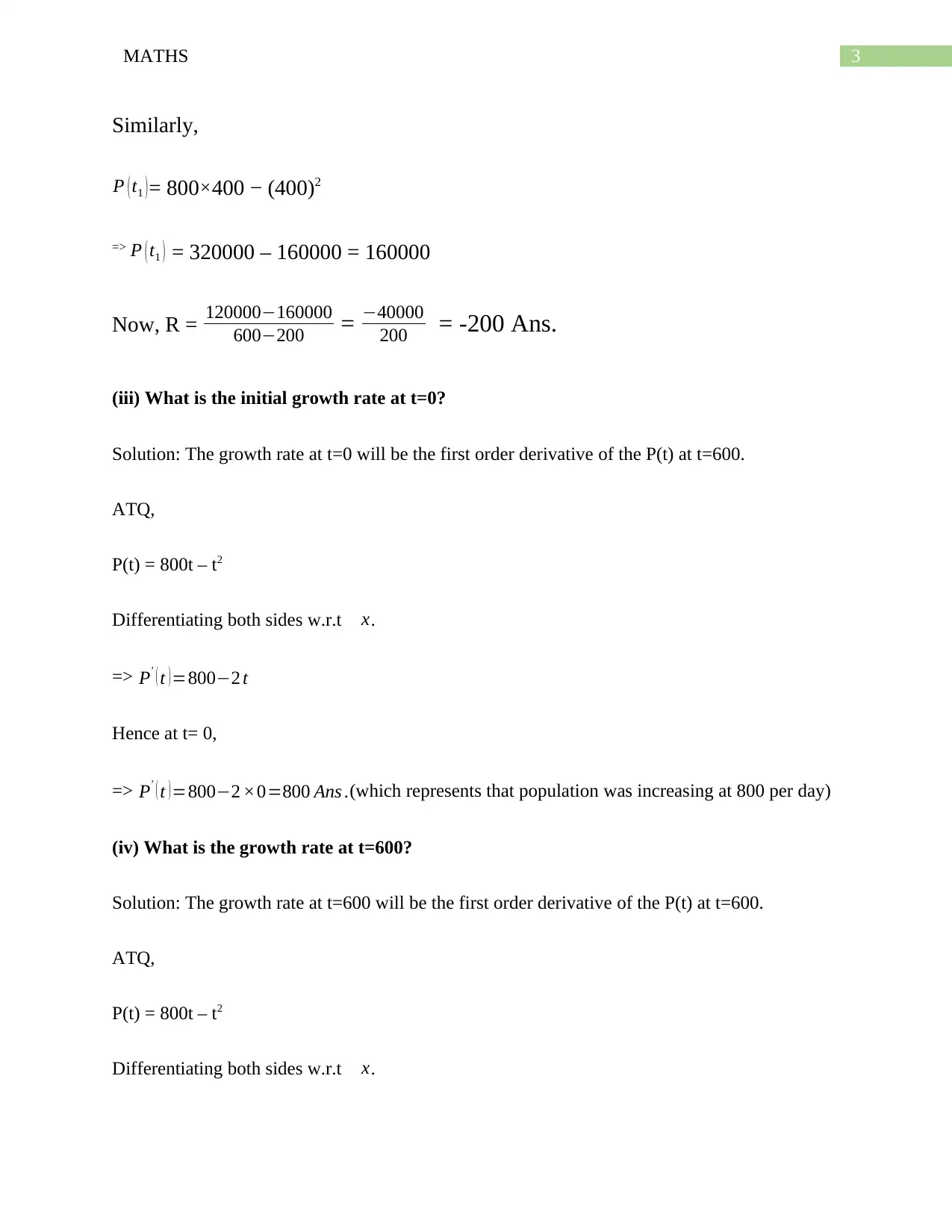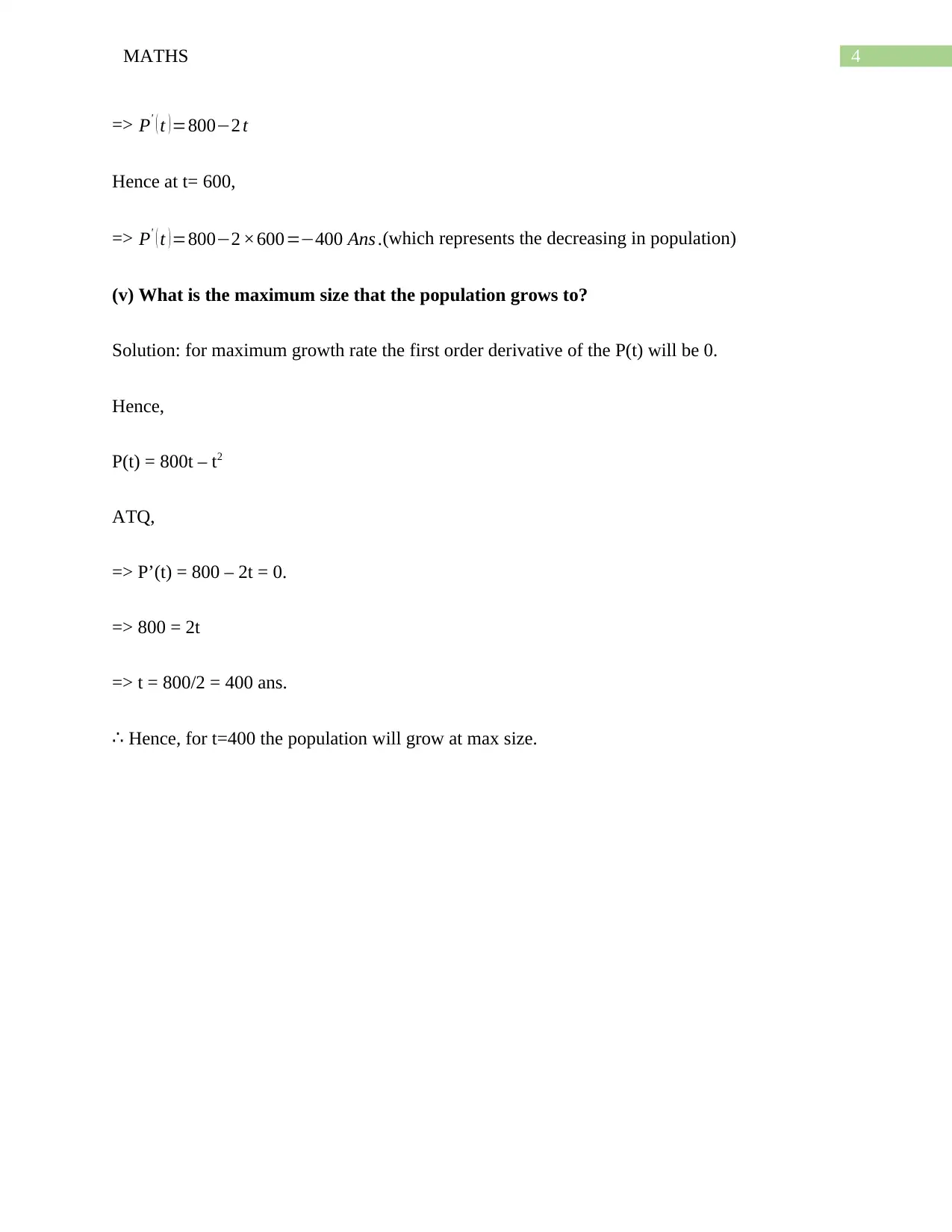Maths Assignment: Analysis of Quadratic Model and Growth Rates
VerifiedAdded on 2022/08/14
|5
|469
|20
Homework Assignment
AI Summary
This assignment delves into the analysis of a quadratic model representing a fish population's growth. It explores various aspects, including sketching the model's graph, calculating the average growth rate between specific time intervals, determining the initial growth rate at time t=0, and finding the growth rate at t=600. Furthermore, the assignment identifies the maximum size the population reaches. The solution utilizes derivative calculations to analyze growth rates and provides a comprehensive understanding of the population's behavior over time, showcasing the application of calculus concepts in modeling real-world scenarios. The assignment effectively demonstrates the use of mathematical tools to analyze and predict population dynamics based on the provided quadratic function.
1 out of 5






![[object Object]](/_next/static/media/star-bottom.7253800d.svg)